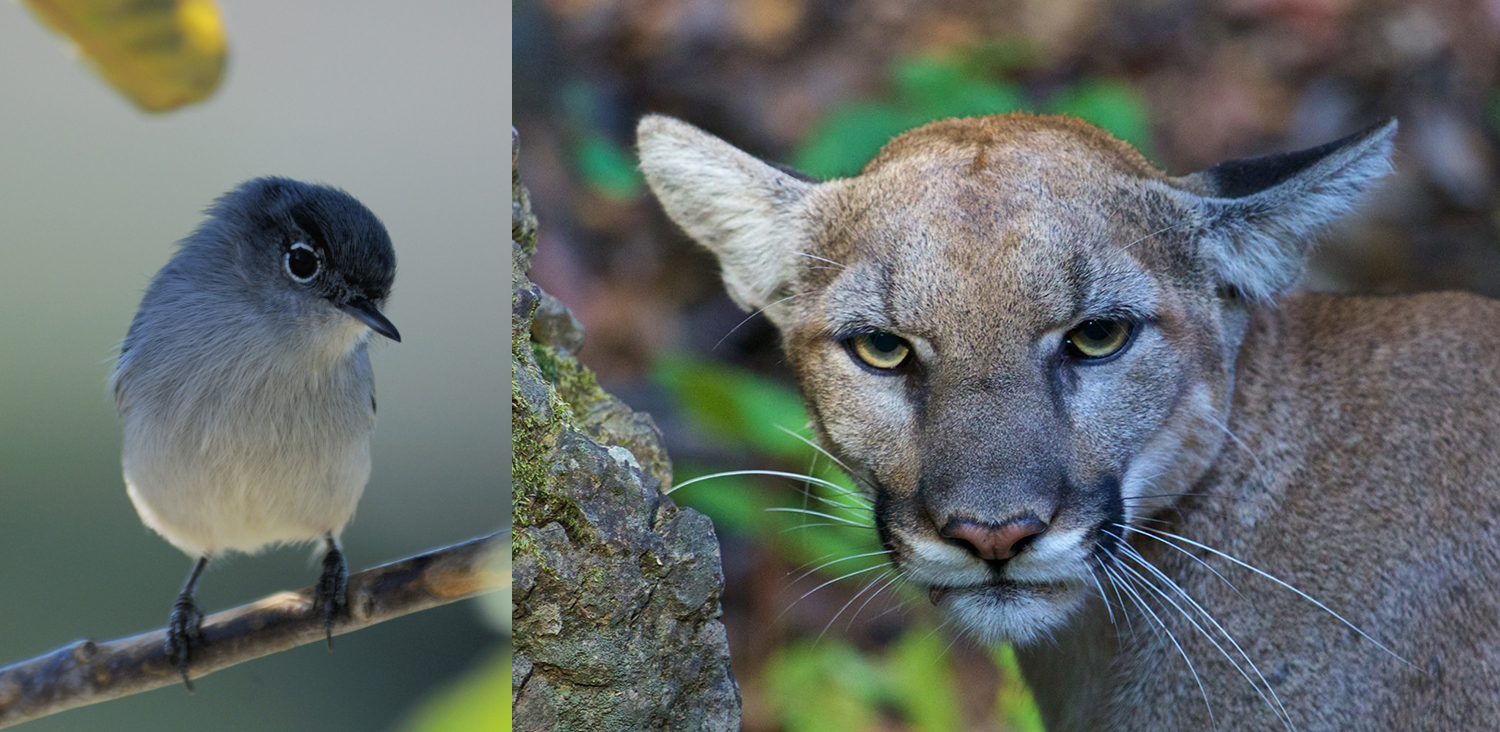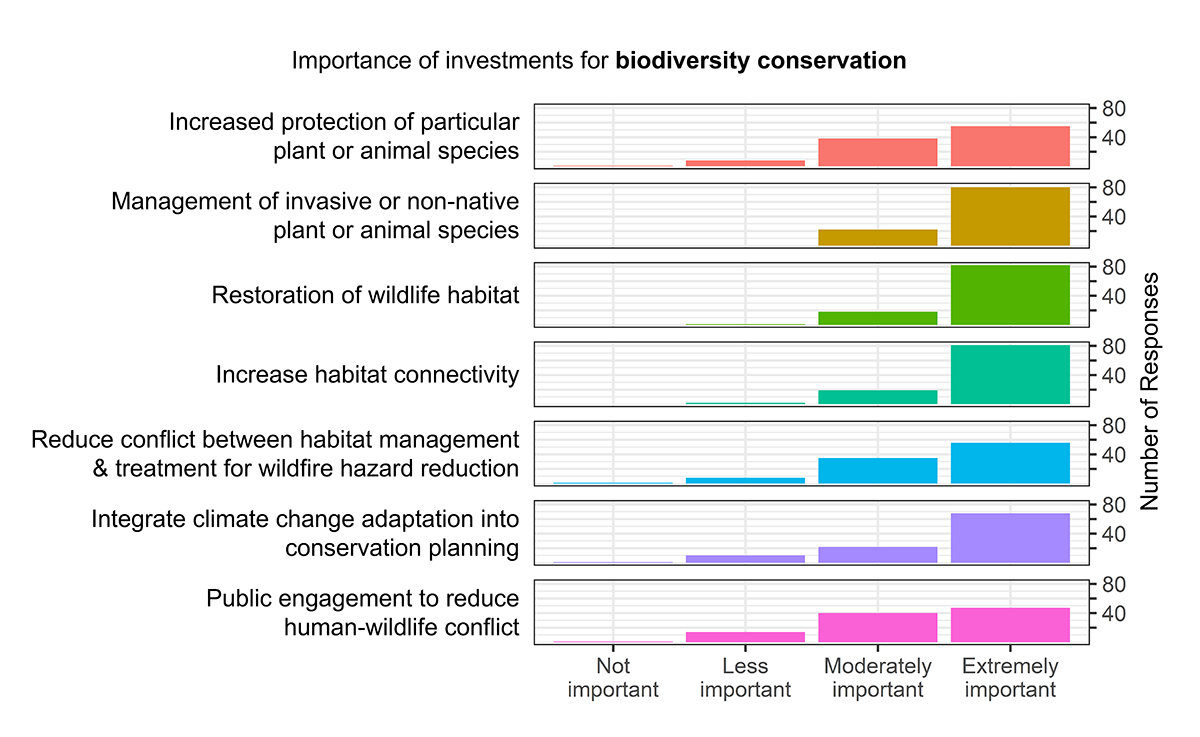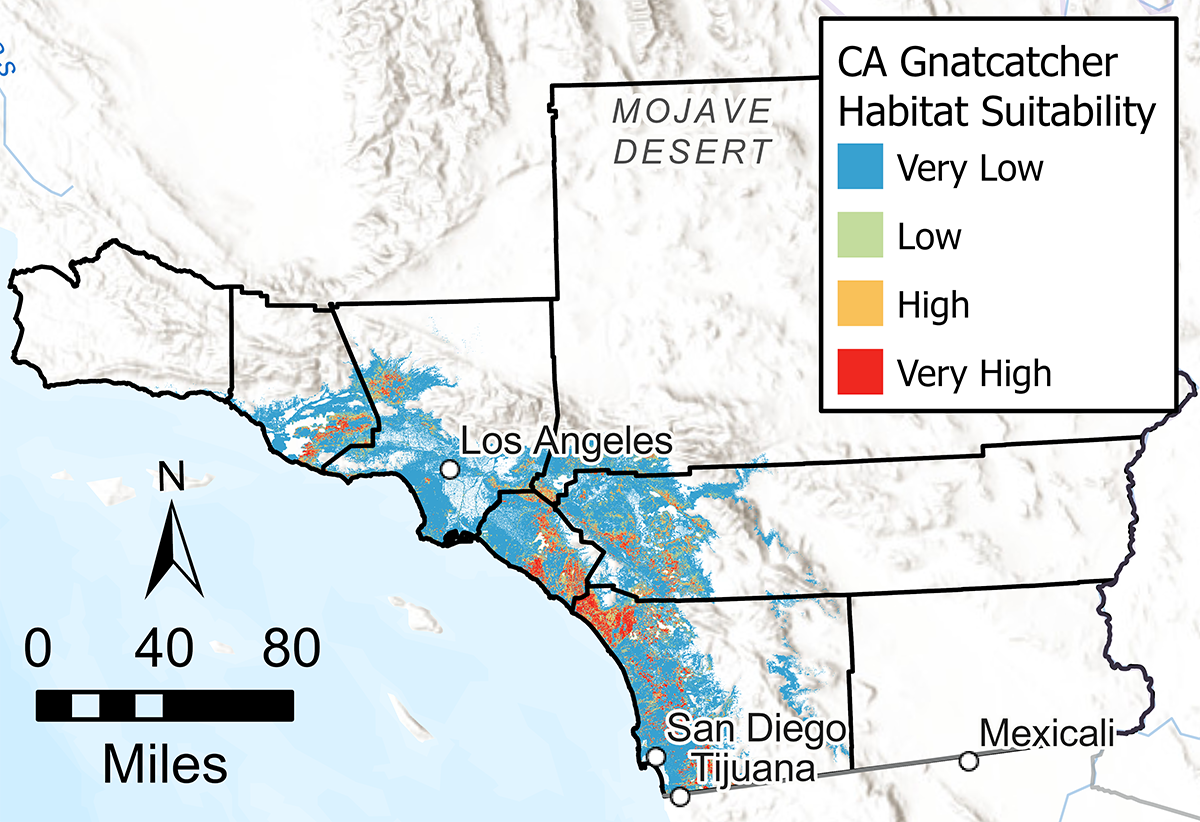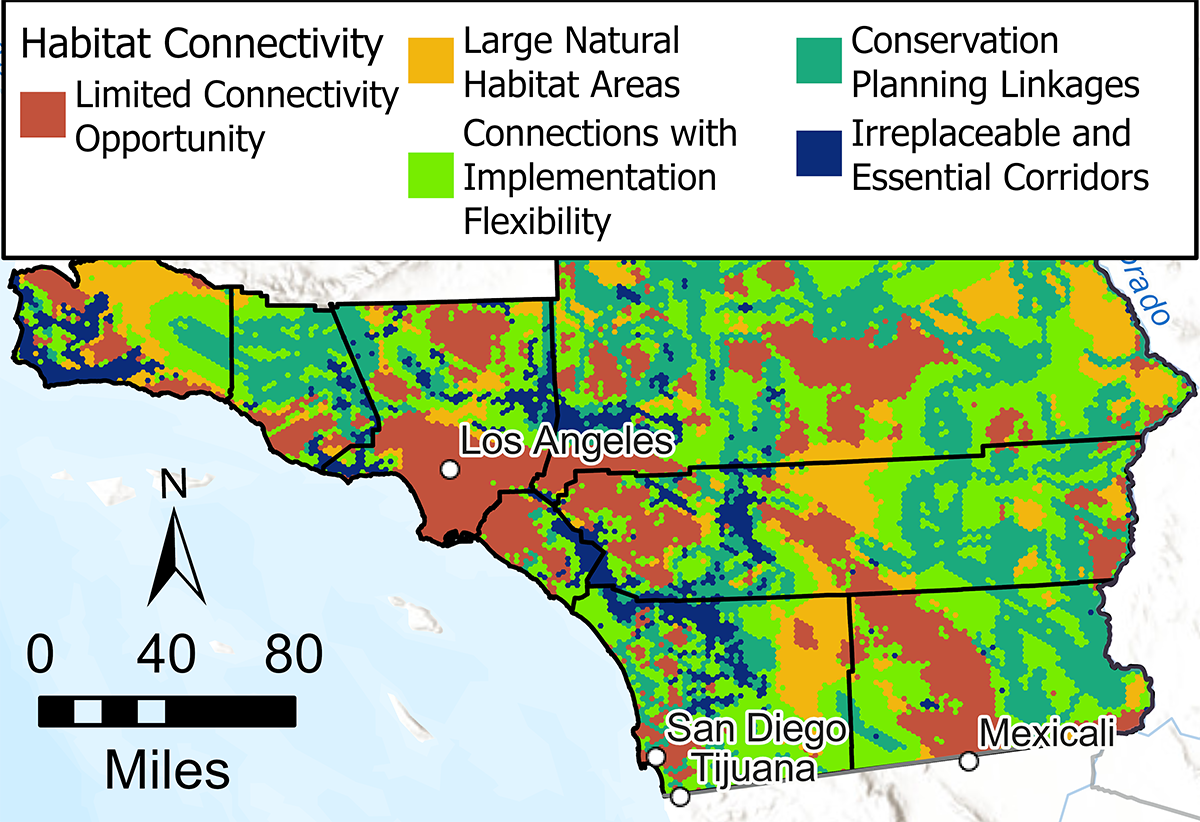Southern California Regional Profile
Biodiversity Conservation

Overview
The Southern California region supports an exceptionally high number of plant and animal species, many of which reside in threatened shrubland habitat. Approximately 200 imperiled plant and animal species can be found in San Diego County alone – more than any other county in the United States. For decades, urban development has caused the degradation, fragmentation, and loss of native habitat. It is estimated that 60-90% of coastal sage scrub habitat has been lost since the start of the 20th century, making it one of the most endangered ecosystems in the world.
Although significant efforts have been made to protect and restore habitat, new threats are emerging, including changing fire regimes, invasive species, and climate change. As previously discussed [see ‘Healthy and Resilient Shrublands’], shorter fire return intervals driven by human ignitions is driving the conversion of native shrublands to annual grasslands. Chaparral provides important habitat to native birds, such as the California thrasher and wrentit. One endemic bird species, the federally threatened California gnatcatcher, depends heavily on coastal sage scrub for its survival. Similarly, riparian forests in the region are being invaded by exotic species which increase wildfire hazard in these areas and also alter stream hydrology. This can make riparian habitat unsuitable for associated sensitive species, such as the federally endangered arroyo toad.
Although significant efforts have been made to protect critical habitat from urban development,the climatic niches of many endangered plants in Southern California are projected to shift northward under climate change. This will force species to shift their ranges, which is especially challenging for species which do not disperse well or do not have access to suitable habitat.To facilitate species persistence, efforts are being made to proactively protect areas that may provide suitable habitat in the future, and to increase habitat connectivity, such as protecting stream corridors, removing fences, and building wildlife crossing over highways. Increasing habitat connectivity can help species to shift their range to track climate change, establish important linkages between habitat areas that were isolated by fragmentation.
Fortunately, some management actions that support biodiversity conservation also increase the resilience of human communities. For example, reducing ignitions and removing highly flammable invasive species can restore native shrubland ecosystems while also reducing wildfire hazard to nearby human communities. Conserving wildlands in high wildfire hazard areas can reduce the likelihood of ignitions near sensitive habitat and concentrate residential development in areas where communities will be less at-risk of catastrophic wildfire.
Stakeholder Perspectives

Survey respondents considered all investments for achieving biodiversity conservation to be at least ‘moderately important.’ Top priorities were managing non-native or invasive species, restoring wildlife habitat, and increasing habitat connectivity. Interviewees emphasized the connection between the degradation of native ecosystems to biodiversity conservation in the region. They were supportive of management actions that reduce wildfire and risk and benefit biodiversity, such as removing invasive species, replacing flammable fuels with habitat-friendly and resilient species like cacti, or planting trees as ember screens to provide habitat for birds and other animals. Several interviewees highlighted the challenge of regulatory compliance timelines. While the threats from management action to sensitive species should and must be considered and mitigated, there is also a need to implement projects before wildfire causes more harm than the proposed management.
Resource Conditions


Biodiversity and metrics to inform its conservation can be measured in a variety of ways. The Regional Resource Kit assesses habitat suitability for several focal species of concern, including the coastal California gnatcatcher (A), as well as habitat connectivity for terrestrial species across the region (B). Habitat suitability for the gnatcatcher is measured by a combination of factors, such as land use, climate, topography and suitability of the area for California sagebrush. Orange County and northern San Diego County contain some of the densest concentrations of highly suitable habitat for the gnatcatcher. Habitat connectivity is another measure used to inform management for biodiversity goals. This metric summarizes, and ranks per unit area, the relative ability of a species to move across the landscape between patches of suitable habitat. Areas with high connectivity, such as the corridor within the Cleveland National Forest between Los Angeles and San Diego, are crucial to protect during management activities seeking to improve wildfire resilience.
